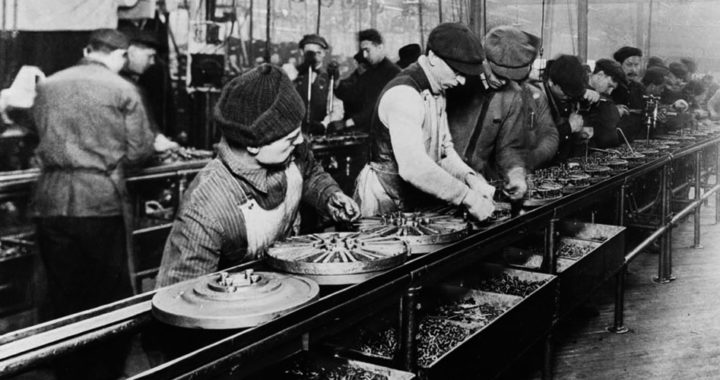The assembly line is a manufacturing process that involves assembling several parts of the intended final product in a sequential or step-by-step manner. First seen in the meatpacking industry in Chicago during the 1860s, the concept was popularized by Henry Ford at Ford Motor Company beginning in 1913, particularly under the specific leadership of William Klann, the production expert at the automobile company.
The Three Principles of Assembly Line According to Henry Ford
In his autobiography “My Life and Work,” coauthored by Samuel Crowther, Ford noted that the assembly line has three fundamental principles. Take note of the following:
Principle 1: Placing tools and workers in the operation sequence so that each part travels the least possible distance while in the process of finishing
Principle 2: Using work slides or some other form of carriers so that when a worker completes his or her operation, he or she drops the semi-finished assembly always in the same place.
Principle 3: Using sliding assembling lines by which the parts to be assembled are delivered at convenient distances.
Advantages and Disadvantages of the Manufacturing Process
The manufacturing process has allowed Ford Motor and other manufacturers to gain a competitive advantage. Its specific benefits centered on having the capacity to assemble an intended final product faster with less labor requirement than the traditional assembling process, which involves requiring workers to carry parts to a single and central workstation.
Ford also noted the following benefits to the workers: there is no need for them to do heavy lifting, no need to stoop or bend over, there is no special training required, almost anyone can do the job, and promotes the employment of immigrants.
Of course, there are several critics of the assembly line due to its purported drawbacks or disadvantages. In his book “Levels of Socioeconomic Development Theory,” sociology professor David Jaffe explained that this manufacturing process compartmentalized workers and simplified their tasks to the point that their jobs become tedious and less exciting.
An article published by the Smithsonian Magazine and authored by Kat Eschner also noted that the introduction of the moving assembly line at Ford Motor allowed Henry Ford to exert more control over his business and workforce.
Some skilled workers considered the innovation an insult to the credentials and capabilities they had built over the years. Others saw the process as a way for Ford Motor to maximize profits by increasing its production capacities while disregarding the pride workers had for the skills they had acquired and honed.
FURTHER READINGS AND REFERENCES
- Eschner, K. 1 December 2016. “In 1913, Henry Ford Introduced the Assembly Line: His Workers Hated It.” Smithsonian Magazine. Available online
- Ford, H. and Crowther, S. 1922. My Life and Work. Garden City Publishing. ISBN: 0-405-05088-7
- Jaffe, D. 1998. Levels of Socioeconomic Development Theory. 2nd ed. Praeger. ASIN: B000THJFAA
- Samson, R. 2020. “Henry Ford: Accomplishments and Contributions.” Profolus. Available online.
- Wilson, J. M. 2013. “Henry Ford vs. Assembly Line Balancing.” International Journal of Production Research. 52(3): 757-765. DOI: 1080/00207543.2013.836616






